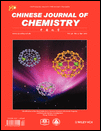A DFT Study on the Structure and Properties of Cu/Cr2O3 Catalyst
Abstract
Using DFT method, the stable adsorption configurations of Cu4 cluster on Cr2O3 (0001) surface were investigated. The regular tetrahedron structure and the planar structures were considered as the initial adsorption configuration of Cu4 cluster, respectively. The adsorption energies of the two structures were also calculated. The simulation result indicated that the adsorption energy of the regular tetrahedron structure was higher than that of the planar structure, and thus the regular tetrahedron structure was confirmed to be the stable adsorption configuration for Cu4 cluster on Cr2O3 (0001) surface. Moreover, it was observed that the Cu4 cluster showed the definite stable adsorption sites on Cr2O3 (0001) surface, namely 3-fold O sites. During the adsorption process of Cu4 cluster onto Cr2O3 (0001) surface, the Cu4 cluster could bond with more Cr or O atoms on the surface, and the apparent charge transfer also occurred correspondingly. Meanwhile, the Cu4 cluster and Cr2O3 (0001) surface would bond in the form of local polarization to enhance the stability of adsorption configuration.




